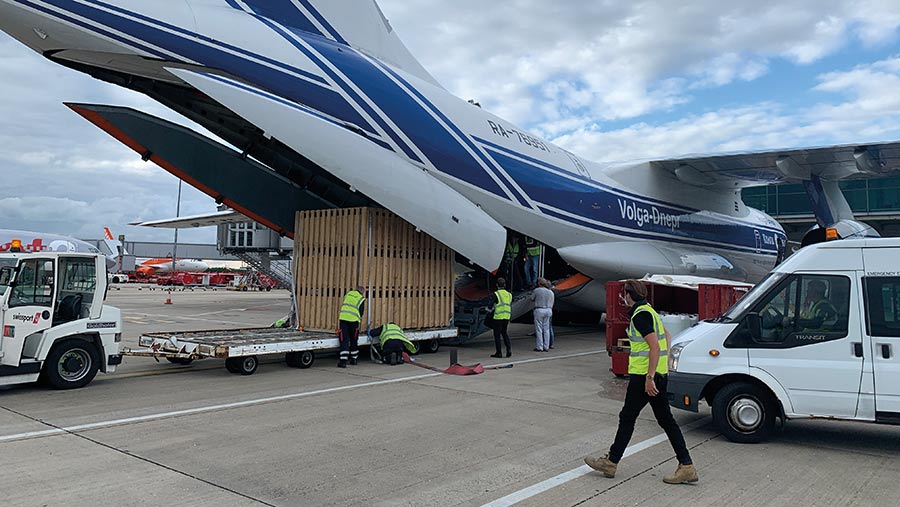Growth in China’s meat imports starts to slow
 UK breeding stock exports are helping rebuild China's pig herd © Charlie Thompson
UK breeding stock exports are helping rebuild China's pig herd © Charlie Thompson China’s rising demand for meat imports appears to be slowing as the country rebuilds its pig herd following the African swine fever (ASF) crisis.
The latest trade figures show that total imports of meat and offal for the 12 months to April 2021 were about 850,000t. That is still 164% higher than immediately prior to the ASF crisis, when the 12-month rolling average to August 2018 was 350,000t.
Pigmeat imports have shown an even more dramatic upsurge with a 227% increase over the same period as buyers replaced domestic pork with imported products.
See also: Overseas staff: Tips to ensure eligibility to work in UK
However, the growth curve for the 12-month average has shown signs of slowing since last summer, according to AHDB analysis. In October 2020, the 12-month rolling average for all meat stood at roughly 800,000t. Since then, the yearly average has gained, but only by a further 50,000t or 6% in the 12 months to April.
One of the reasons for the slowdown is a reduced quantity of pigmeat exports from Germany to China. Germany had been a major exporter of pigmeat, but the Chinese government imposed a ban after ASF was discovered in Bavarian wild boar last September.
China’s requirement for meat protein imports has also started to diminish as its domestic pig herd rebuilds following a number of setbacks.
According to AHDB analyst Bronwyn Magee, Chinese pig numbers had been on an upward trend since November 2019. But the emergence of new variants of ASF over winter, and pressure from other diseases – such as porcine reproductive and respiratory syndrome – caused numbers to drop back again.
At 266.3m head in June 2021, China’s herd is still down by about 20% compared with August 2018 at the start of the ASF crisis. However, the June figure represents a rapid increase of 5% for the total herd, compared with month-earlier levels as farmers attempt to restock again.
It is the second consecutive month’s growth with further indications of recovery in the breeding herd, Ms Magee said.
“Sow numbers were 8% higher year-on-year in June, which suggests herd expansion is likely over coming months as restocking continues,” she added.
